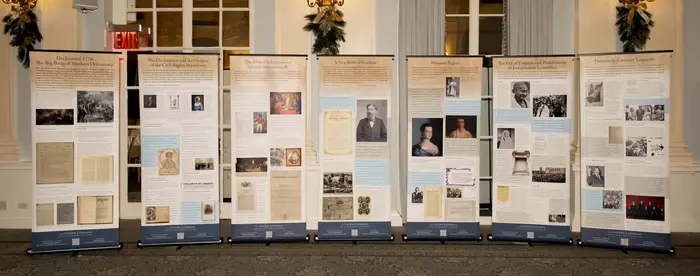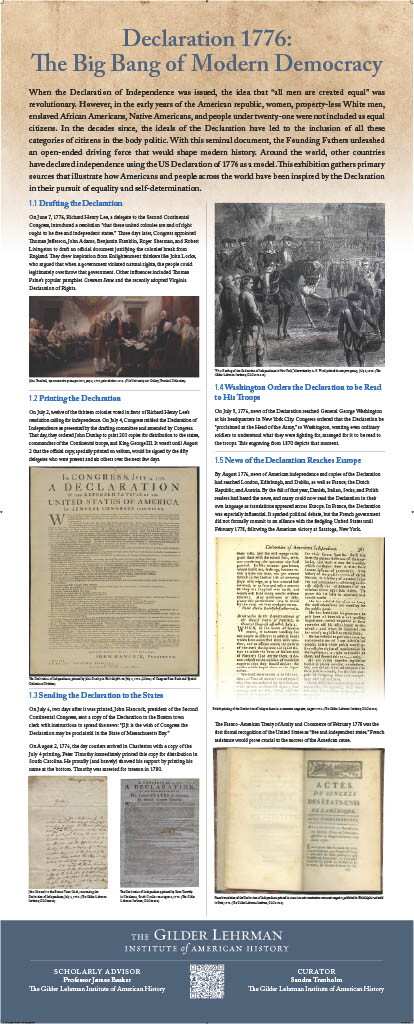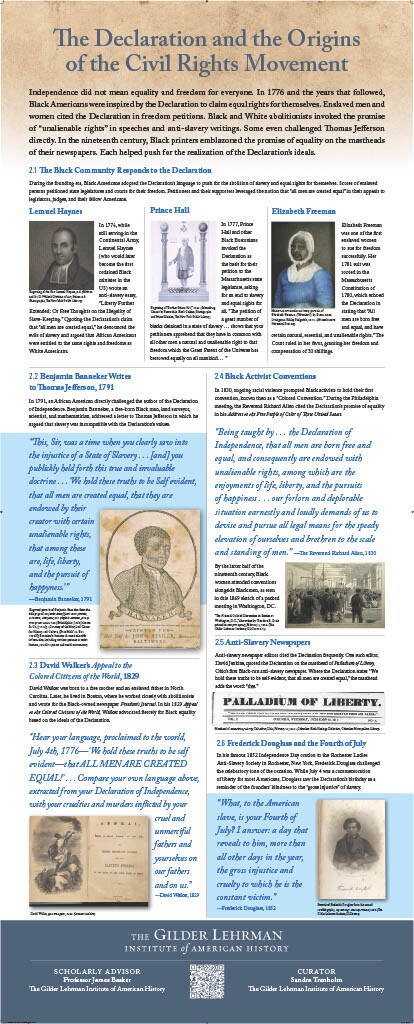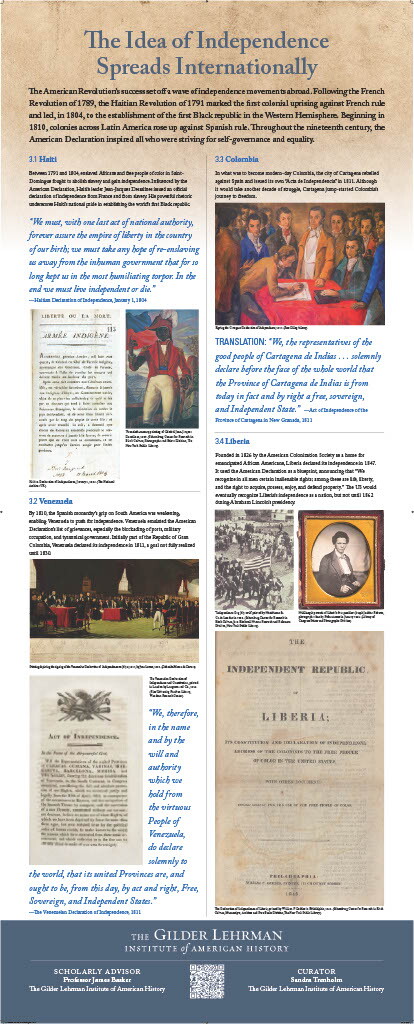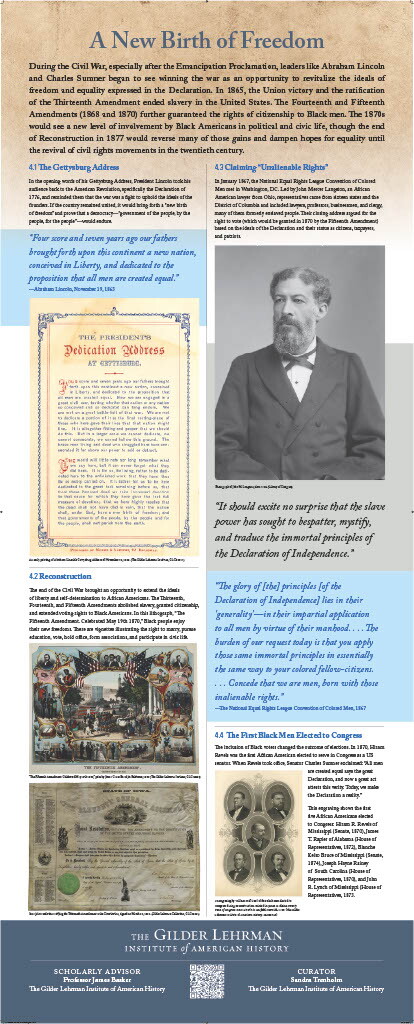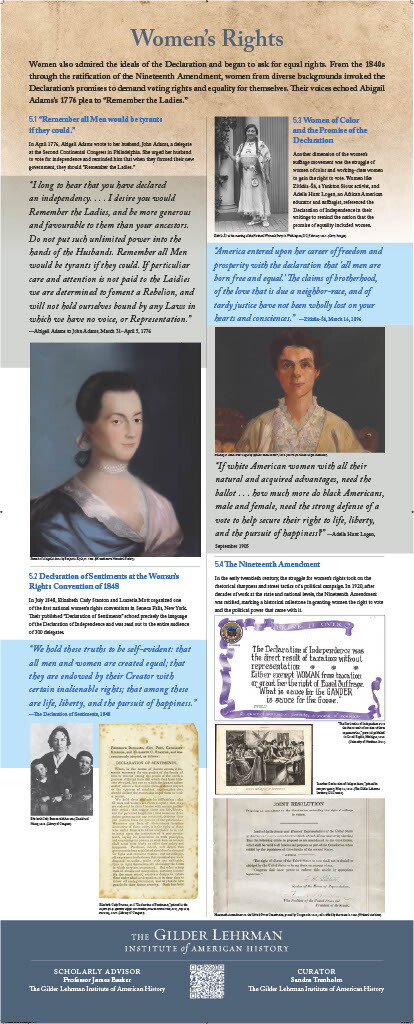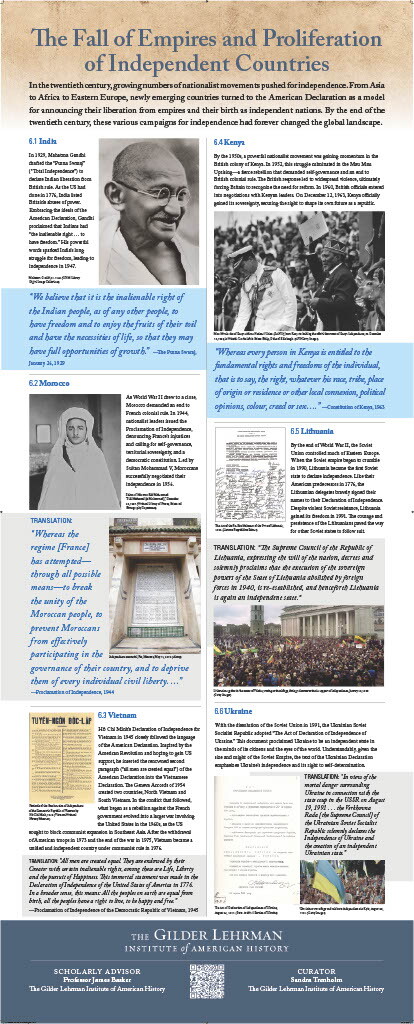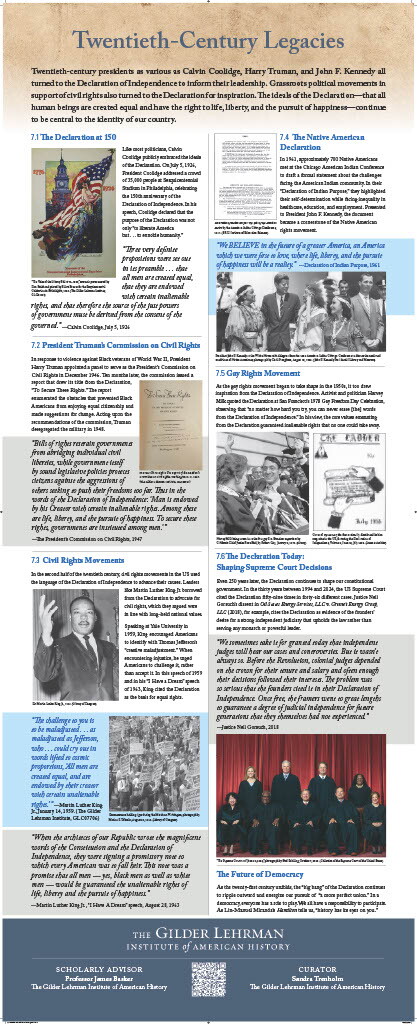What are the costs?
• To Rent: $495/four weeks for most exhibitions; $995/four weeks for Freedom: A History of the United States
• To Buy: Alexander Hamilton, Frederick Douglass, and World War I are available for $1,875. Becoming the US, Cold War, Declaration 1776, Immigration, Who Can Vote, and World War II are available for $1,950. Freedom: A History of US is available for $2,950. A wheeled travel case is available as a separate purchase for $500.
Do I need to pay sales tax?
State sales tax laws vary. You may be liable for sales taxes. The Gilder Lehrman Institute will contact you about your potential sales tax obligations.
How can I pay?
We can accept credit cards, checks, or purchase orders, but we cannot currently accept bank transfers.
Do you offer any discounts or grants?
Unfortunately, we cannot offer any discounts or grants at this time. We recommend Donors Choose for schools needing financial assistance to rent or purchase an exhibition.
How do you ship the exhibitions?
Exhibitions are shipped in wheeled cases measuring 15 x 15 x 40 inches and weighing approximately 90 pounds. FedEx handles all shipping. Once your exhibition has shipped, you will receive a tracking number.
How do I set up the exhibition?
We include detailed setup instructions with each rental. Please note that different exhibitions have slightly different setup instructions, so make sure you refer to the correct type of exhibition.
What happens if something breaks after I receive my exhibition?
We are always here to help you troubleshoot or order new parts. The venue will bear the costs of replacement parts due to venue error or excessive wear and tear.
